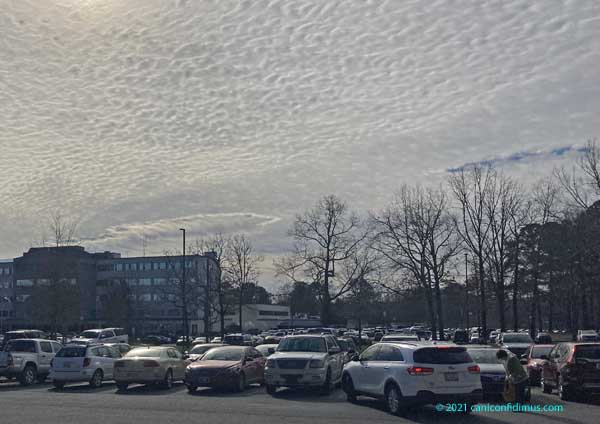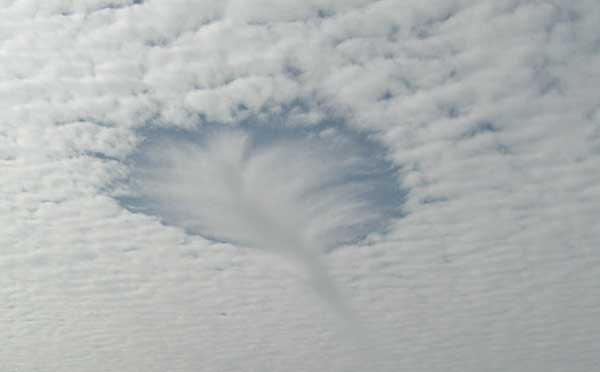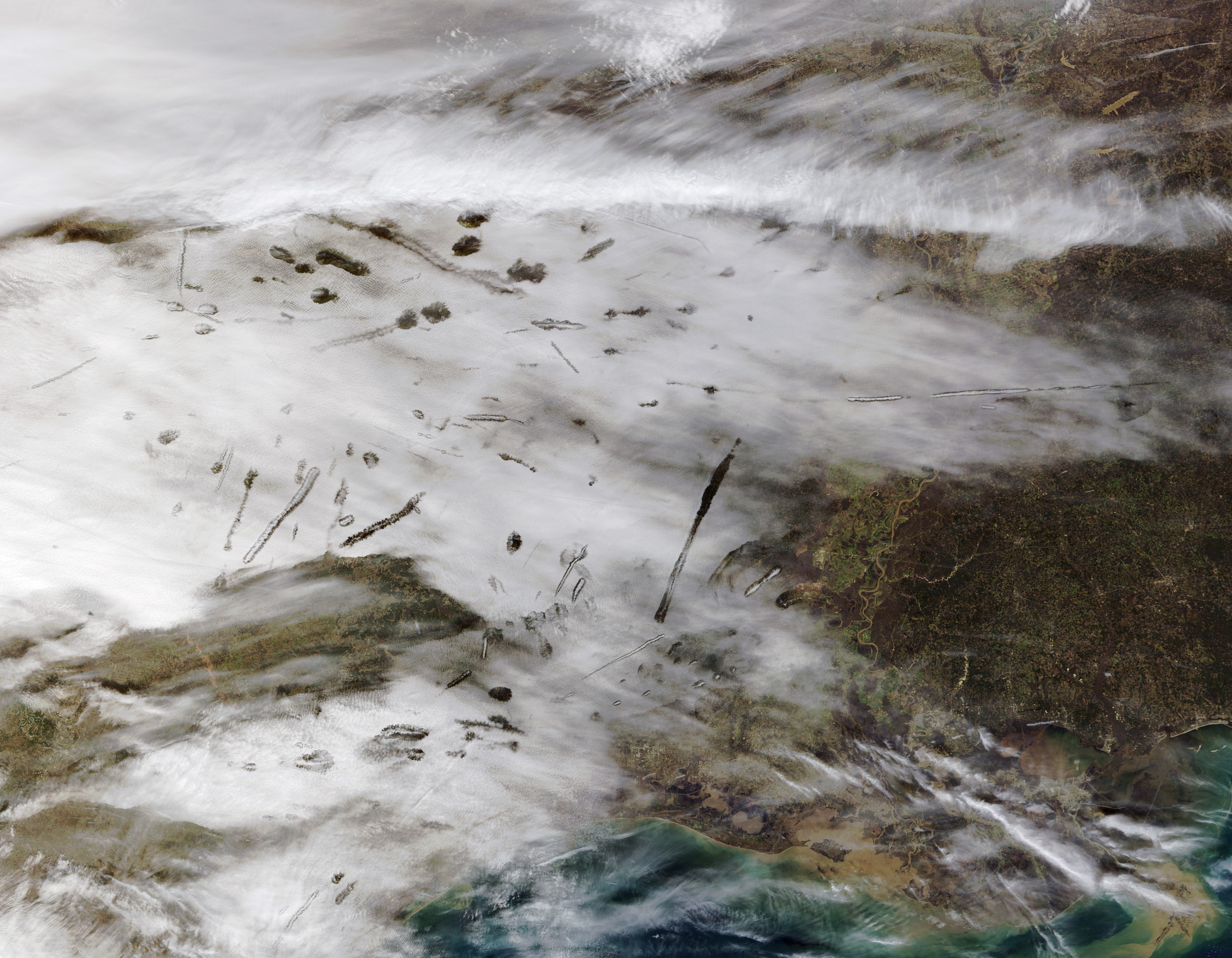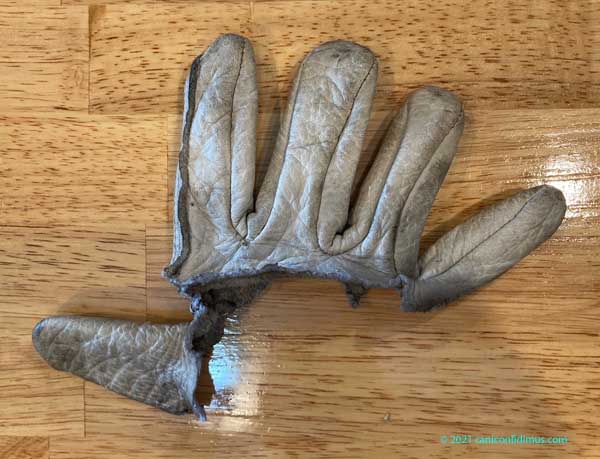Leah and I were on our way to a doctor’s appointment Friday morning when we saw a strange cloud formation. We got enough glimpses to get a good idea of what it looked like, but we didn’t have time to stop. When we got to the doctor’s office, the hospital across the street blocked most of the view, but I was able to get this picture.

The clouds we saw on the way had circular holes opening into blue sky above the cloud cover, and wispy streaks of falling ice crystals inside the hole. You can see a hint of that in the right edge of the image above, and what might be the start of another opening immediately over the hospital on the left. This might also be an oblique view where the falling ice crystals hide the blue sky.
This phenomenon is called a fallstreak hole, or a punch hole cloud. This is one of many fallstreak hole images you can find online.

You can see the roughly circular hole with clear sky above, and the ice crystals falling from the hole.
Both of the local TV stations we watched Friday night showed images of these fallstreak holes taken by viewers. It’s rare enough that the Sacramento (Ca) Bee reported on it in their online publication.
These odd formations are caused by a combination of the right weather conditions and the presence of an airplane to fly through. The clouds are middle to high altitude cirrocumulus or altocumulus clouds formed from supercooled water drops. These drops are liquid water with a temperature below the normal freezing point. They require some kind of disturbance to cause them to freeze. That disturbance is provided by an airplane that flies through the cloud. According to some analysts, the changes in air pressure caused by the passage of the wing or by propellers can be enough to cause ice crystals to form. Others suggest that particles from jet engine exhaust provide ice nuclei to start the freezing process. The freezing droplets form crystals, which grow into even larger crystals. When they get big enough, they fall. If the cloud conditions are right, essentially all the droplets in a region of the cloud form crystals and fall, leaving a clear hole in the cloud. The hole grows outward as more ice crystals form from the initial disturbance. The holes can grow up to several tens of kilometers wide.
The holes can be circular, elliptical, or linear. Linear fallstreak holes are called canals. Fallstreak holes are also called hole punch, punch hole, sky punch, or cloud holes. The canal fallstreak holes are caused by an airplane that flies at a shallow angle through the clouds.
Fallstreak holes are sometimes visible from space. Here is a NASA image of fallstreak holes and canals over eastern Texas and Louisana in January 2007.

This was the first time I had ever seen a fallstreak hole in real life, although Robin had an image of what I assume was a fallstreak in one of her newdharmabums posts. According to NASA, altocumulus clouds are mostly composed of water droplets supercooled to a temperature of about -15C, and such clouds cover about 8 percent of Earth’s surface at any given time. It seems kind of odd that the right clouds are relatively common, and airplanes to fly though them seem pretty common, but the fallstreak holes themselves are so rare.

